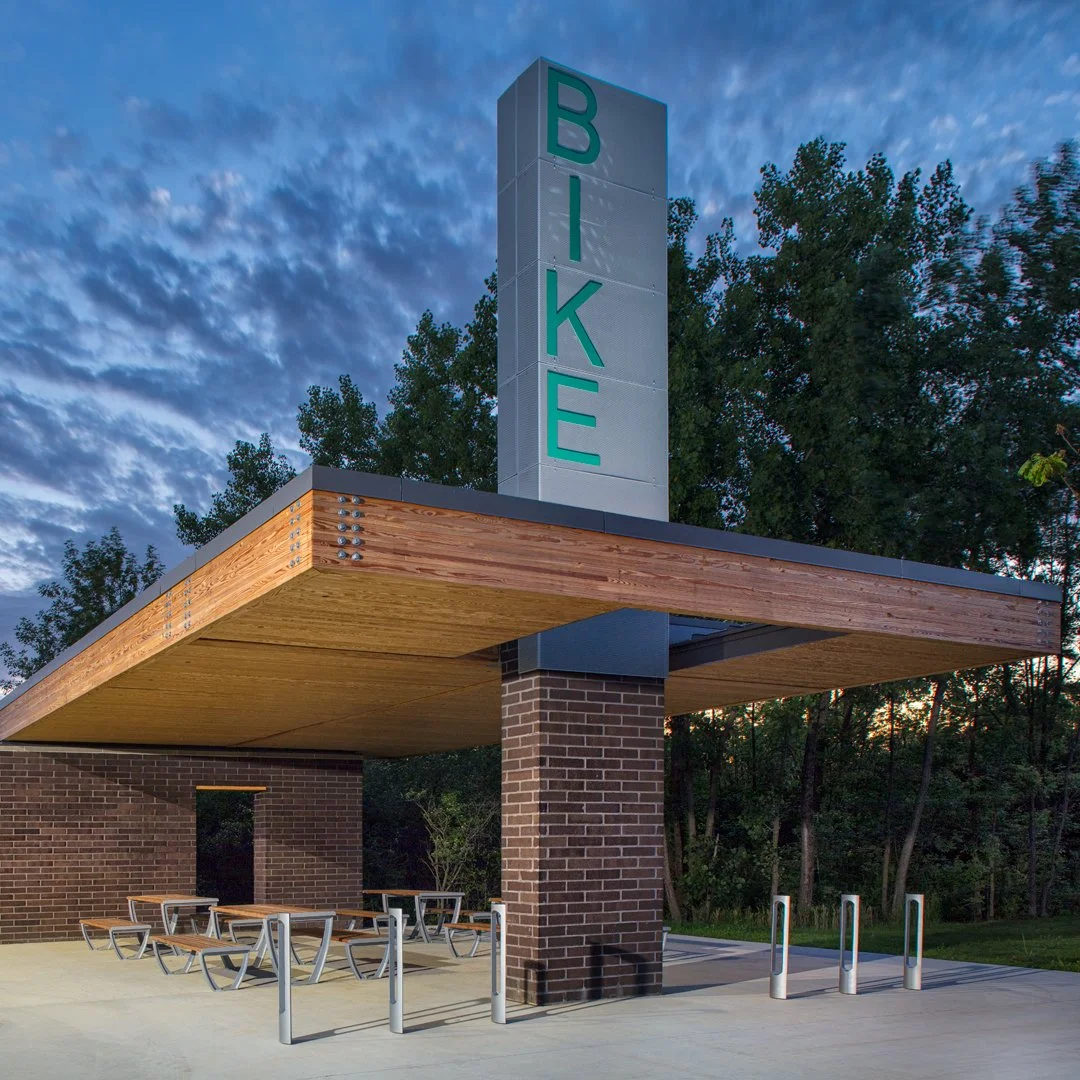WILSON ROAD TRAILHEAD
Columbus, Ohio
CHALLENGE
After 15 years without new public recreation spaces on Columbus' near west side, the city sought to create a transformative community hub that would connect an underserved neighborhood to the broader regional trail network while revitalizing a brownfield site into a gathering place that fosters community wellness.
SOLUTION
WSA designed an elegant, minimalist park that serves as both a vital node in Ohio's statewide trail system and an intimate community anchor for the Westgate neighborhood. Through extensive community engagement sessions, we developed a vision that balances the needs of long-distance cyclists with local residents' desire for accessible public space.
The park's focal point is a striking open-air shelter that provides essential amenities while establishing a distinctive sense of place. Its clean architectural lines create a visual landmark that orients visitors within the 47-acre site while providing necessary shelter for community gatherings and cyclist rest stops. Thoughtfully integrated bike racks and a self-service repair station support the cycling community, while flexible picnic areas invite neighbors to linger and connect.
Environmental stewardship guided every design decision, from material selection to energy systems. Local materials, including brick quarried in northeast Ohio, ground the project in place while reducing transportation impacts. The park achieves net-zero energy consumption through strategically placed solar panels that power site lighting, while a naturalized stormwater management system directs runoff into retention swales that enhance the landscape. By transforming a formerly neglected brownfield into thriving public space, the project demonstrates how thoughtful design can heal both community and environmental wounds simultaneously.
IMPACT
As a crucial link in central Ohio's growing trail network, the park has improved transit equity by providing safer bicycle commuting options between downtown Columbus and west side neighborhoods typically overlooked by infrastructure investments. The space has become a focal point for community life, hosting regular gatherings and creating a renewed sense of neighborhood pride and identity. Recognized with AIA Honor and Merit Awards, the project stands as testament to architecture's power to connect people to place, to nature, and to each other – through thoughtful design that prioritizes human experience and community needs.











